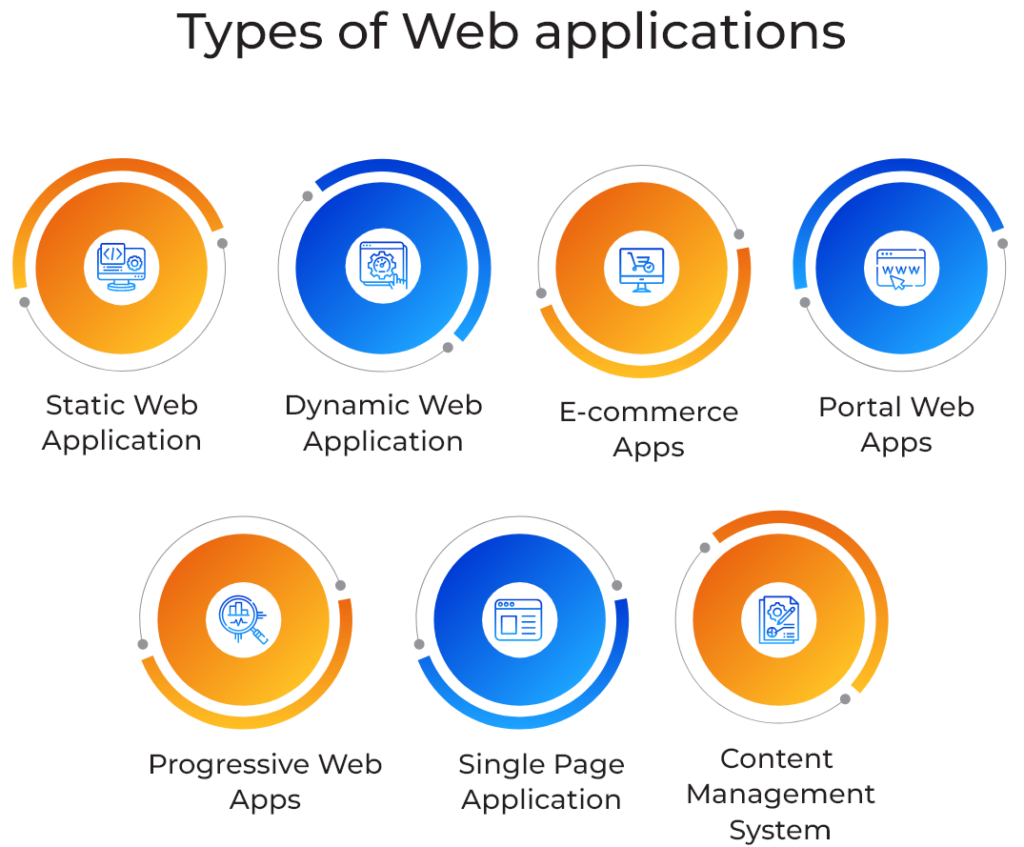Businesses are starting to rely on technology for boosting marketing and sales campaigns, and as a consequence web applications have evolved into an important business segment. Web applications integrate the personalized service of native mobile apps with the ease of accessing them from any device via a web browser. Web app development is an ideal solution for a wide range of businesses, ranging from e-commerce and financial institutions to entertainment, education, and more.
Web app development combines the client-side and server-side of programming to create an application that is accessible via a web browser. Developers begin by conceptualizing a web application based on a specific problem, designing the app, choosing the correct framework for development, testing, and implementing the app. Innovations in web applications have helped deliver seamless native-like experiences to customers using a web browser, which has helped enhance their popularity.
This guide will give a brief overview of web app development software and show why companies like Facebook and Google continue to spotlight web app development.

Table of Contents
Types of Web Applications
Let us categorize web apps based on their types and functionality-
Static Web Applications
Static web applications contain a collection of static web pages that showcase every visitor’s relevant data and lack flexibility or interactive features. They are created using HTML and CSS language.
Dynamic Web Applications
Dynamic web apps are very interactive, necessitating both server-side and client-side scripting. A web application allows you to enter data into a web app and get real-time results.
E-commerce apps
An e-commerce app is a web app that can help you place orders and make transactions when you sell or buy anything online.
Portal Web Apps
A portal web application helps users navigate to a secure area from a home page. Examples of portal web apps include vendor portals, patient portals, student portals, and government portals.
Content Management System (CMS)
A CMS allows even non-technical users to create and modify online content quickly. A content management system will enable users to keep these resources up to date without requiring help from IT.
Progressive Web Apps
Progressive web apps (PWAs) enable you to create a product that combines the best of web and native mobile applications. PWAs act and feel like using an app, taking advantage of the ease of deploying and maintaining a website.
Single Page Applications (SPA)
A single-page application, or SPA, is a web application that allows users to interact directly with a single page. It adaptively rewrites the existing website with updated data rather than reloading it multiple times.
Conclusion
Developing web and mobile applications will become a critical component for boosting marketing and sales campaigns in 2023. Web applications are a better option than native app development or even hybrid app development since they don’t need to be installed and can be accessed by users irrespective of device, system software, or channel.
Speridian is a global business and technology solutions provider with a proven record of solving business challenges with our unique, industry-based consultative approach. Our experience in providing high-end custom software development services worldwide to businesses of all sizes can help you get ahead of technology challenges before they arise.
Contact Speridian to transform your ideas into amazing web and mobile applications.
Photo by Mikhail Nilov from Pexels





